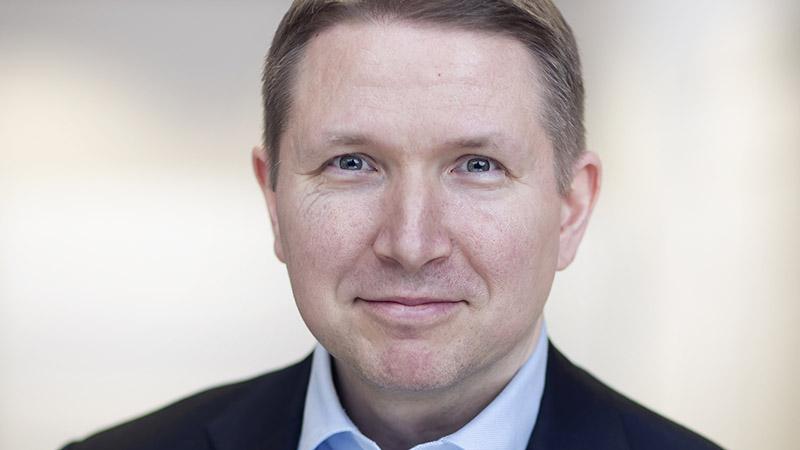The CEO of Gasgrid Finland Olli Sipilä on finding the future of gas
Securing cleaner, greener energy for an increasingly power-hungry world is no easy task. Gas opens up a host of opportunities to cut carbon and other emissions but moving toward a balanced circular economy requires long-term thinking and information sharing. Olli Sipilä, CEO of Gasgrid Finland, looks at future trends in the gas industry.
The demand for energy is growing worldwide, while the drive to decarbonize is increasing. The switch from coal to gas has led to increasing CO2 reductions in recent years and this trend will continue. The change will also help reduce other emissions like NOx, SOx, and fine particles, which are especially important in terms of rapid urbanization. The global liquefied natural gas (LNG) industry has opened up new sources of gas and new commercial and physical liquidity, helping clients to better optimize their portfolios to protect against uncertainty. However, in the long run the gas sector must be decarbonized.
Around three to five years ago the drive to decarbonize moved from being primarily about brand image or specific product strategy to become more about overall competitive advantage and managing strategic risks. More and more companies are now publishing decarbonization strategies, and the pioneering operators who have been leading the trend are now collecting the fruits of their labor. We are still in unchartered waters with many development needs, but that is always the way in a period of extreme transformation.
The benefits of gas over other clean energy sources
Interest in power-to-X and hydrogen as energy sources has been growing rapidly. Solar and wind are – or will soon be – the most affordable sources of clean energy, and onshore wind is already the most competitive electricity source for new-build sites in the Nordics. Unfortunately, these new sources are also intermittent, creating a need for both storage and flexibility. The best production sites are quite often located far away from where the energy is needed. With such huge storage and transmission needs, using existing infrastructures and sector integration becomes an interesting opportunity.
Picture this: a bakery in France wants to buy biogas to ensure its products are 100% sustainable. One place to produce biogas in Europe could be in Finland. But how do you match demand with supply in this case? The answer lies in measuring and sharing information technically and commercially. There will be a growing variety of gases supplied, including biogas, clean synthetic gas, hydrogen, natural gas (with or without CCS/CCU), LNG, and liquefied biogas (LBG). Some clients need 100% methane and some clients can accept 20% hydrogen as part of their gas composition. There are also various chemical impacts on infrastructures caused by different gas mixes, meaning that high-quality measurements are important to ensure good asset management. A deeper integration of supply and demand will take place in future energy markets: one day it will be better to use a gas molecule in transportation and the next day in heating, or as a backup for the electricity system. This offers a lot of potential for reliable, affordable, and versatile measurement processes.
Long-term thinking will bring circular economy benefits
Many companies have achieved early wins by focusing on environmental issues and supply chain efficiencies in the past, such as recycling and reducing wasted resources across their operations. From now on, it will become a lot more challenging to integrate various supply chains, with challenges concerning locations, times, volumes, and substances. The whole circular economy system needs to be continuously in balance for all participants; the key is to think long term and share information between participants. One interesting area is local or regional biogas ecosystems where farms can provide feedstock to biogas producers and receive biogas and fertilizers in return. Excess biogas can then be sold to other users. In addition to the environmental benefits, this brings real value to local economies and even national-level security of supply.
Gasgrid Finland: Towards carbon neutrality, even through unprecedented times
Gasgrid Finland is a gas transmission system operator owned by the Finnish government that provides infrastructure and a marketplace for capacity and biogas certificates. We aim to be the most customer-focused, reliable, efficient, and transparent gas company, enabling societies to decarbonize fast, securely, and cost-efficiently. Our first step is to open the Finnish gas market and continue to drive some of the most advanced regional gas market integration with the Baltic states.
The current global pandemic is an extraordinary situation with very different impacts on industries and companies. The energy industry is classed as critical infrastructure for the society, and it is essential to ensure national security of supply. We at Gasgrid Finland have a pandemic preparedness plan in place and have implemented protective and alternative measures to ensure that critical parts of our operations continue to function properly. We have two priorities: the safety of our personnel and partners and the functioning of the energy system as part of society.
Olli Sipilä is the CEO of Gasgrid Finland, the gas transmission system operator of Finland. He is also Chairman of the Board of Baltic Connector Oy. Besides the gas sector, his background includes the entire value chain of the energy industry ranging from energy resources to major energy users. In the last 15 years, he has been involved in several market development processes and restructurings, as well as creating and transforming the strategies of various organizations towards carbon-neutral energy systems. Olli has previously held positions with Pöyry, Deloitte, and ABB.
How is Vaisala working on carbon neutrality with gases? Read more about turning waste into value at www.vaisala.com/biogas.

Add new comment